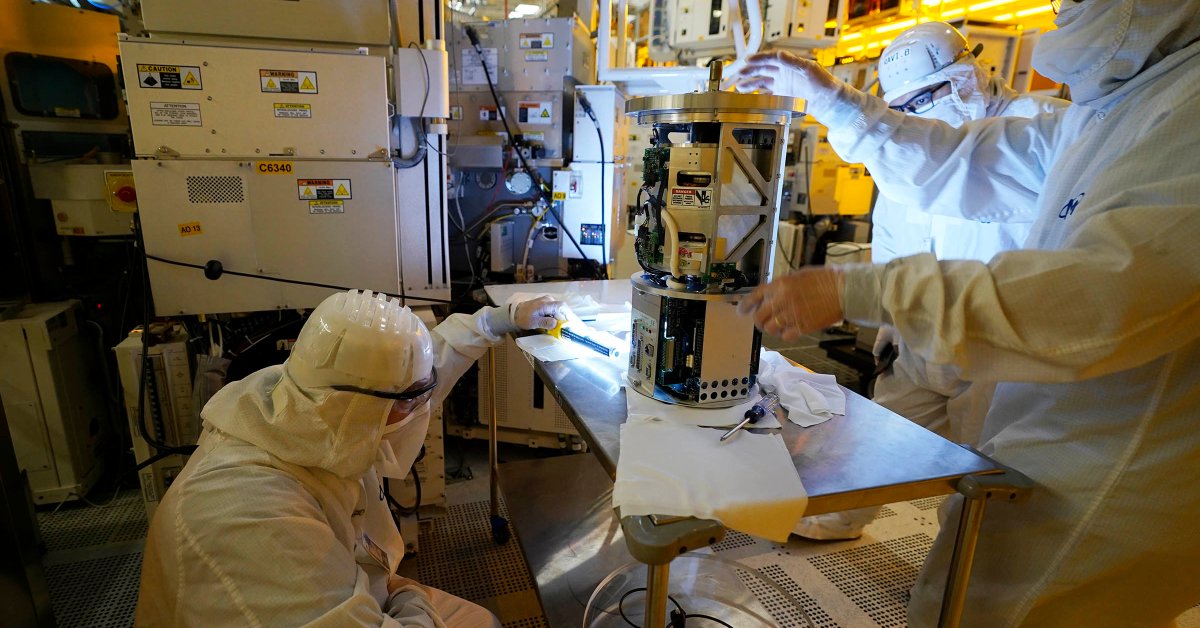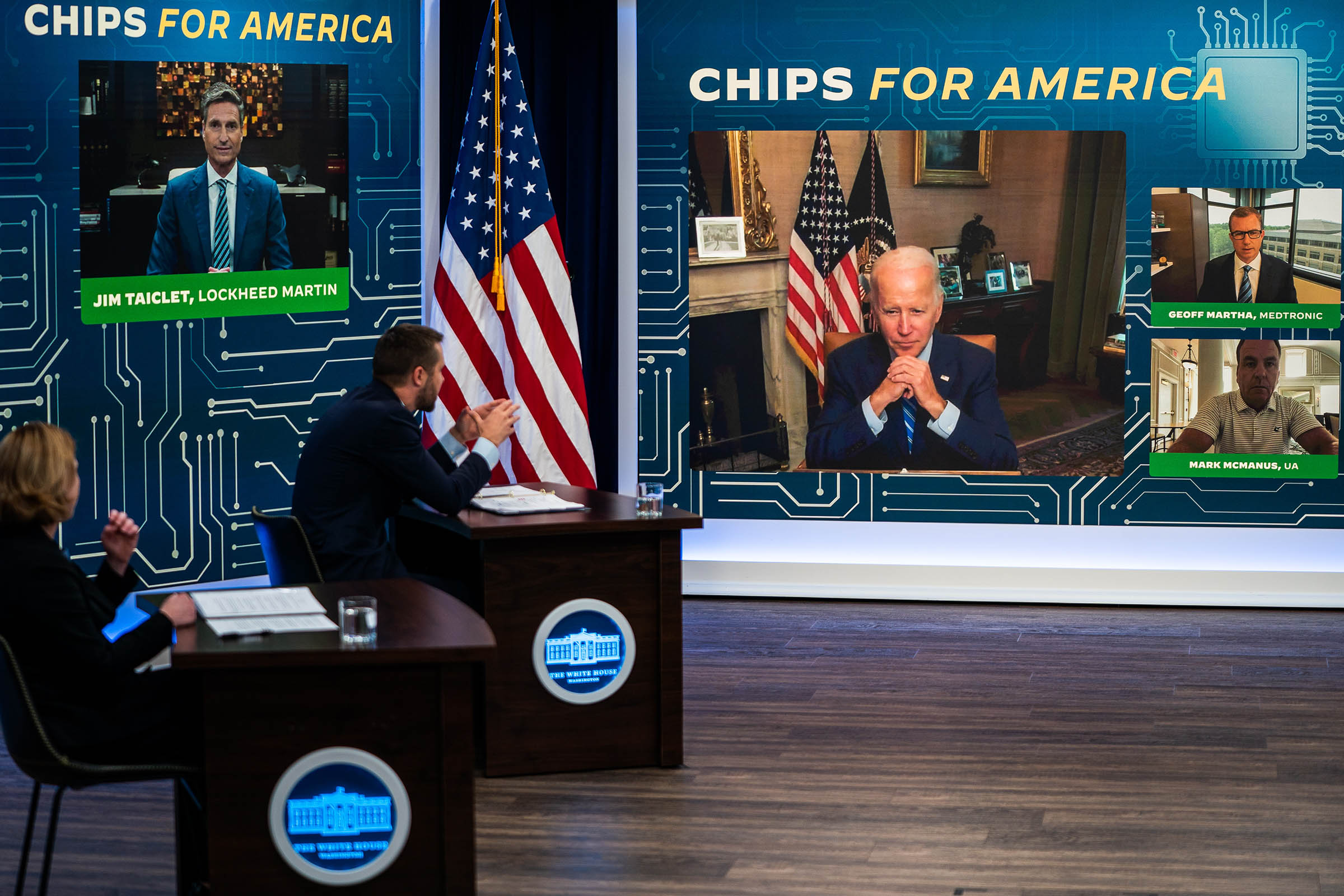
It’s been a difficult calendar year for buyers looking for vehicles, electronics and something that needs a pc chip. A international semiconductor shortage has remaining lots of corporations not able to fill orders or even end goods they’ve started off assembling, clogging up warehouses and leaving a lack of stock throughout the nation.
Purchasing a new PlayStation 5 console stays nearly impossible. Several automakers have slowed down output in their factories, delaying shipments of new motor vehicles. It’s even impacted more obscure products—just try to locate an reasonably priced pet dog washing booth these days. Extra than two a long time following the pandemic started to shock the world-wide semiconductor offer chain, the businesses that make the chips to electricity these solutions are however feeling the pinch.
Washington’s option
The Senate could present some relief in the coming year, as it votes on a $52 billion package this week that would offer funding and tax credits to companies that develop chips and invest in domestic producing. If it passes the Senate as predicted, the House will take into consideration the legislation in advance of its August recess, which starts in two months.
“We are extremely dependent on other nations around the world for chips,” Commerce Secretary Gina Raimondo instructed TIME on Tuesday while the Senate voted to restrict debate on the investing package deal. “Chips are the most vital merchandise in modern day industrial equipment, healthcare know-how and every piece of military services products.”
The burst in federal paying out is intended to spur growth in domestic chip output, according to supporters of the monthly bill, but it may choose yrs for buyers to see the consequences when browsing for new electronics.
For many of the largest tech and automotive businesses, semiconductors utilised to be a rather cheap part, 1 that price as tiny as two cents to manufacture in the 1970s. Now, these tiny digital switches are the largest obstacle stopping much more profits.
An Iphone 13, for instance, needs around 60 semiconductors. The PlayStation 5 requires about 130. Javelin missile programs have about 200 chips and refined protection helicopters have in excess of 2,000. For cars, the difficulty is even much more excessive. The Porsche Taycan has about 8,000 chips inside of. And while the world wide microchip crunch may possibly be waning following two a long time, tech firms and automakers are striving to get increased manage over their offer of chips and uncooked elements.
Examine more: Intel Reveals Designs for Large New Ohio Manufacturing unit, Combating the Chip Scarcity Stateside
The deeper trouble
But with chips in the highlight, a lot of in the market are warning lawmakers that the ongoing chip shortage cannot be solved by a sudden surge in government funding.
“It’s not genuinely just a semiconductor chip lack. That’s the end product,” says Michael Hochberg, the president of Luminous Computing, a California-based chip startup that develops light-weight-centered semiconductors for synthetic intelligence. “It’s a semiconductor expertise scarcity, a semiconductor tools shortage, and a semiconductor fabrication capacity shortage, too. It is all of people items at after.”
Every chip desires to be embedded in a single of individuals ubiquitous eco-friendly printed circuit boards in order to do the job, similar to how a brain desires a human body, says Travis Kelly, CEO of the Arizona-based Isola Group and chairman of the Printed Circuit Board Affiliation of The united states. These circuit boards involve laminate, copper foil and fiberglass yarn, among other uncooked supplies that are in short offer.
“It utilised to be that semiconductor manufacturers could just assume that they would get these parts out of a catalog by FedEx and not be concerned about it,” Hochberg suggests. “It was like breathing the air outdoors. They didn’t get worried about the availability of parts until eventually about two a long time back.”
“Unless we deal with the full microelectronics ecosystem, we’re not genuinely securing our domestic supply chain,” Kelly claims.

President Joe Biden discusses the worth of passing the Chips Act on July 25, 2022.
Demetrius Freeman—The Washington Article/Getty Photos
The countrywide protection considerations
Kelly’s printed circuit board company, Isola, is among the the very last American corporations to manufacture printed circuit board laminate in the U.S. The resources necessary to make that laminate—fiberglass yarn and copper foil in particular—are only made and bought by just one supplier in the whole place. “It’s a single point of failure,” Kelly suggests. “Think about that for defense.”
Lawmakers and individuals associated in the source chain are now ringing the alarm about the lack of American-designed semiconductor components. Two decades ago, the U.S. made over 26% of the world’s printed circuit boards. That amount is now down to 4% as much more companies consider gain of the tax breaks and reduced labor fees of running abroad. China and Taiwan in particular have grow to be hotbeds for semiconductor and printed circuit board factories, with their governments investing greatly in chip creation and constructing onshore sources for the chemical compounds and tools wanted to guidance an unbiased industry.
“There’s no extra essential strategic excellent than semiconductors,” Hochberg says, listing off illustrations that assortment from nationwide safety to artificial intelligence. “If we want to keep a technological and strategic benefit for AI, information warfare and armed service programs, when these chips are at the heart of these systems, it is likely to be important to get in advance of this difficulty.”
The nationwide safety issues of manufacturing semiconductors abroad has been a vital aspect of receiving Congress to acquire action on the CHIPS Act, a senior legislative advisor to Raimondo instructed TIME.
“People may possibly not treatment the place the printed circuit board will come from when they’re functioning a toaster, but they do care about it for warfighters and navy purposes,” Isola’s Kelly claims.
Only a handful of highly developed semiconductor factories, also called fabs, continue being in the U.S. nowadays. Setting up new factories can value between $10 to $20 billion and acquire up to five a long time to develop offered the sophisticated devices and chemical compounds wanted to operate a factory. And the method of really transforming all of all those components into a closing chip takes nearly a few months on your own.
“It’s everything from silicon wafers, substrate, chemical compounds,” Raimondo states. “This things is not built in the United States, and it’s surprising.” Congress is hoping that the suppliers of all these areas will be incentivized to relocate to the U.S. at the time extra fabs are created domestically—a major aim of the CHIPS Act. “If TSMC builds a mega fab in Arizona, or if Intel builds a mega fab in Ohio, the total ecosystem of talents and suppliers will build [there],” Raimondo explains.
What’s future
Some executives see the semiconductor scarcity easing as suppliers stock up on chips and other parts. Taiwanese chipmaker TSMC, the world’s biggest agreement company, warned of “excessive inventory” in the semiconductor provide chain that will consider the rest of the year and beyond to rebalance. Not all semiconductor foundries have experienced the exact fortune, but it is a constructive indicator for the tech and automotive industries that rely on these chips.
Korean automaker Hyundai recently posted its finest quarterly revenue in 8 several years, and Swiss engineering company ABB, which relies on semiconductors to establish industrial technological innovation products, explained it’s last but not least viewing relief in the provide chain right after yrs of troubles. “We have now appear to a condition in which we have significantly greater commitments from the suppliers,” ABB Chief Govt Bjorn Rosengren mentioned in a July 21 earnings get in touch with.
And the White Residence and Division of Commerce are optimistic that businesses will start to announce investments in the U.S. chips business if the CHIPS Act funding is signed into regulation.
“It’s not quite diverse from what you’re seeing in Germany and Italy, which have permitted on their own to become extremely dependent on Russian oil and gas,” Raimondo states. “That could be the United States if we never get action now.”
Additional Have to-Study Tales From TIME








